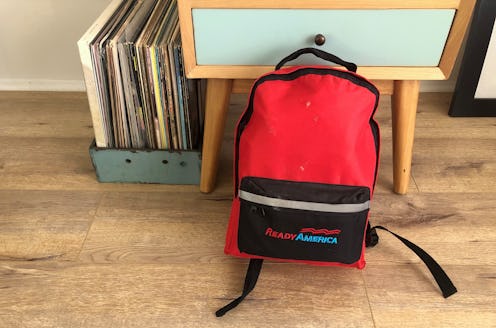
A few hours ago, I felt my condo sway back and forth as if it were a ship, my computer monitor started shaking, and all of the items on my desk began rattling. As any person who resides in Los Angeles does, I immediately got on Twitter to verify what I already knew — we'd just had an earthquake. While little earthquakes are common in California, the U.S. Geological Survey reported that this July 4, 2019 Southern California earthquake registered at a 6.6, which is the largest quake in the area in more than 20 years.
Because the world seems to be marching toward the zombie apocalypse, and this quake is just one more sign that the end is near, chatter amongst my friends quickly turned to disaster kits. Who had one, who was prepared and who wasn't, and what to put in a disaster kit in the first place. Whether it's wildfires, tornadoes, hurricanes, floods or blizzards, every region of the country eventually experiences some form of natural disaster. And being prepared with a few days of food, water, a first-aid kit, and more can help you stay calm during an emergency.
"After an emergency, you may need to survive on your own for several days. Being prepared means having your own food, water, and other supplies to last for at least 72 hours," the website Ready.gov, which provides DIY disaster kit instructions, said on its website. "A disaster supplies kit is a collection of basic items your household may need in the event of an emergency." If you're ready to get started, here's what to put in a disaster kit so you've got what you need when things go sideways.
1Get A Pre-Stocked Disaster Kit
If you want to buy a pre-stocked kit, there are plenty of options. My roommate and I have this one from Amazon. It comes with three days of food and water for two people, and other emergency items like warming blankets, rain ponchos, flares, masks, gloves, a whistle, and a first-aid kit.
The food and water is bagged, which weighs less than bottles and cans. If you have to leave your home and you'll be carrying your kit on your back, you want it to be as light as possible. Some of my friends stock up on bottled water. This is ideal if you can stay in your home, but if you have to flee on foot it's unlikely you're going to haul your 48-pack of water with you. Make sure you have water for your home and water you can carry.
2A LifeStraw Personal Water Filter
This is a must for any disaster kit. A personal water filter like LifeStraw allows you to drink water that would otherwise be unsafe to consume. If there is a disaster and the water supply is cut off, you can use a LifeStraw to filter water from a puddle, a river, and other water sources. I have one of these in my kit. If you can't take your water with you, this is the next best thing.
3Solar Cellphone Charger
One thing people don't think about until it's too late is how they'll keep communication devices charged during a power outage. There are emergency apps you can use without Wi-Fi or cell service during a disaster, so it's vital to keep your phone charged. Make sure you have a solar charger in your disaster kit so you can rely on the energy of the sun to keep you connected.
4Medication
If you take any form of prescription medication, including antidepressants, make sure you have a week's supply in your disaster kit. Grabbing your meds is likely the last thing you'll think of when fleeing a disaster, so make sure you stock them ahead of time.
5Identification, Emergency Documents, Paper Maps & Cash
The Red Cross recommends making copies of all of your important documents like your identification, passport, and medical information and putting them in your emergency kit. You'll also want to have some cash on hand (small bills are best) so you can purchase essentials if necessary.
If you're sheltering in place after an earthquake, this FEMA checklist covers every possible scenario. Download it now, before you need it. Finally, make sure you have a paper map in the event you have to navigate without GPS, which is highly likely. Seal all of the items in waterproof bags so they'll stay safe and dry during a disaster.
6Personal Care Items
In addition to emergency items, don't forget personal care items. Stock your kit with travel-sized toothbrushes, toothpaste, face wipes, sunscreen, tampons, wet toilet paper, and a few rolls of pet waste bags (you can use them to clean up after yourself and your pets).
7Pet Necessities
While you can certainly stock your own pet items, if you're looking for a pre-packed kit, this one comes with survival items for two dogs. This includes food, water, a leash, first-aid kit, and more. You can also get a disaster kit for cats.
In addition to having an emergency kit, make sure you also agree on an emergency communication plan with family or friends in case you get separated. For example, you can agree to meet at a specific place if you have no way to communicate. While it might not always be possible to carry this plan out, it's best to prepare for every possible outcome.
Being ready before a disaster happens means you'll have to make less decisions in the moment, which goes a long way toward helping you keep a cool head.